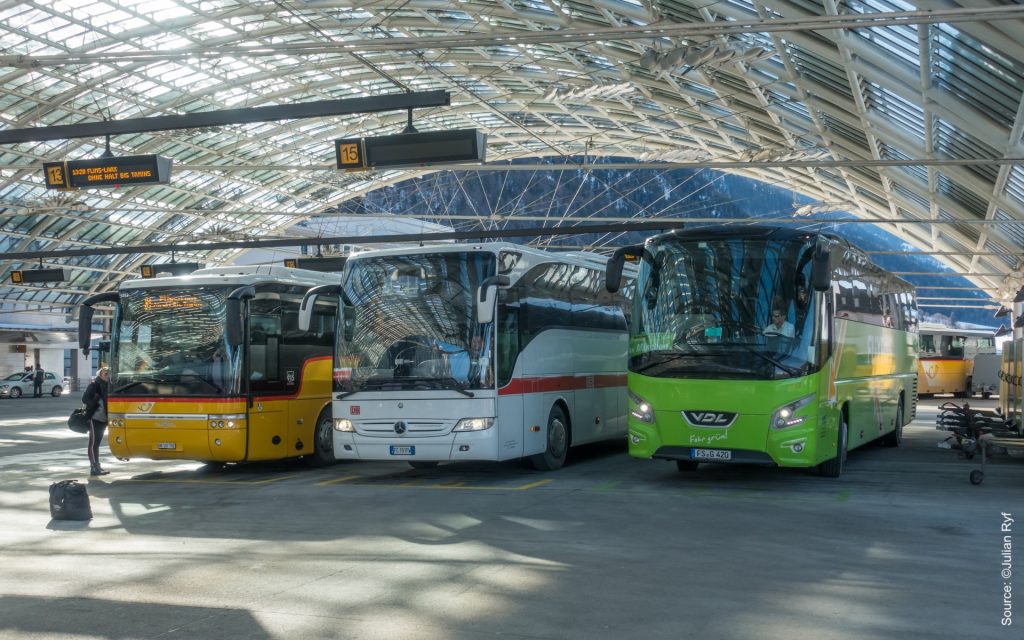Long-distance bus lines have recently enjoyed great success in Germany. But could they also compete with railways in Switzerland? Transportation systems graduates Samuel Bissig and Philipp Hess investigated this question in their bachelor thesis.

The first long-distance bus lines within Switzerland started operating in June 2018 – more could follow. Whether and how many passengers will change from the train to the bus has not yet been scientifically predicted. On behalf of the Schweizerischen Südostbahn AG (SOB), Samuel Bissig and Philipp Hess have taken up this topic. In cooperation with SBB, SOB will take over the long-distance traffic line over the Gotthard mountain route from Basel and Zurich to Locarno. A cooperation between SOB and SBB is also planned on the Bern-Zurich-Chur corridor. For the graduates, the central question was whether a Swiss long-distance bus offer could be a competition for these corridors of the SOB-SBB cooperation.
Commuters are not a relevant user group
Specifically, Samuel Bissig and Philipp Hess investigated the potential of different user groups for long-distance buses in Switzerland and performed a survey among them. Furthermore, they carried out a detailed situation analysis of the described corridors and the long-distance bus market in Germany and nearby countries. Based on the demographic data and the survey results on the purpose and travel entitlements, the graduates were able to create user profiles. “We have chosen the groups of people we believe have the greatest potential for a long-distance bus operator,” says Samuel Bissig. “The survey showed, for example, that there is very little demand among commuters for long-distance buses as a means of transport to work.
The key is the ticket price

Based on the survey results, the graduates created user profiles and calculated the potential of the respective user group. They entirely focused on leisure traffic. “More than 20 percent of all respondents who fall into this defined user group would use a Swiss long-distance bus offer”, says Samuel Bissig and adds: “That means they could imagine using it, if the price would be attractive.” According to the graduates’ survey, the ticket price is the most important criteria, even before the travel time. Comfort and on-board service hardly contribute to the decision. “While in Germany the long-distance bus with Wifi scored points compared to the railway, this is less important in Switzerland,” says Philipp Hess.
Potential exists
With the help of SBB passenger figures, it was possible to define for each user group how many people on the respective corridors could switch from the train to the long-distance bus. During the week, according to their calculations, only under one percent of all journeys made by rail have potential to be substituted by long-distance buses. On Saturday this figure is over three percent, on Sundays over five percent. “These figures may sound low, but in terms of rail traffic throughout Switzerland, that means several hundred people – enough to load a few buses,” says Samuel Bissig, summing up: “This means that although the potential is not as great as in Germany, price-sensitive customers are likely to migrate from the railways to the long-distance bus.”